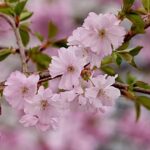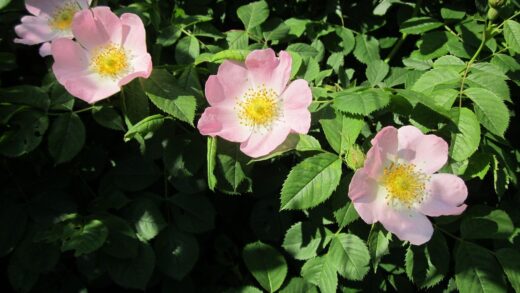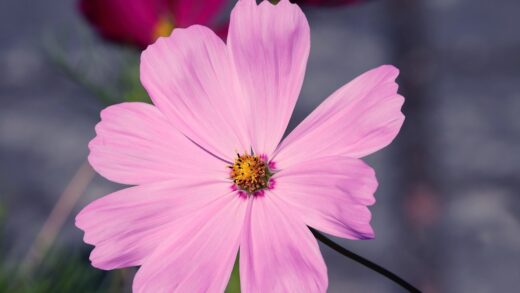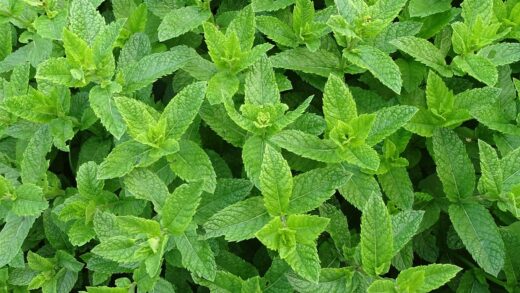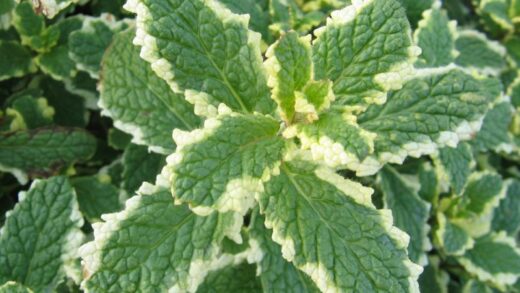Caryopteris, often celebrated under the charming name bluebeard, is a truly rewarding shrub for any garden enthusiast looking to introduce a splash of late-season color. Its appeal lies not just in its vibrant, azure blossoms that grace the garden from late summer into autumn, but also in its remarkably low-maintenance nature, making it a favorite among both novice and experienced gardeners. This deciduous shrub is prized for its aromatic foliage and its ability to attract a delightful array of pollinators, including bees and butterflies, thereby contributing to the garden’s biodiversity. Proper care ensures that this plant will thrive, producing a stunning floral display year after year, transforming the landscape at a time when many other plants are beginning to fade. Understanding its basic needs is the first step toward cultivating a healthy and vigorous specimen that will be a standout feature in any planting scheme.
The foundation of successful Caryopteris care begins with selecting an appropriate planting site, as this will dictate the plant’s overall health and vitality. This shrub has a strong preference for a position that receives full, direct sunlight for at least six hours each day, as ample light is crucial for prolific flowering and maintaining a dense, compact habit. Inadequate sunlight can lead to leggy growth, with sparse foliage and a significant reduction in the number of blooms, diminishing its ornamental value. Furthermore, the intensity of the blue flower color is often enhanced by high light levels, making a sunny spot essential for achieving the most dramatic visual impact. When considering a location, also think about its mature size to avoid overcrowding and ensure good air circulation around the plant.
Soil conditions are another critical factor in the long-term health of the bluebeard. This plant is notably adaptable but performs best in well-drained soil, as it is particularly intolerant of waterlogged conditions, which can quickly lead to root rot and other fungal diseases. Sandy or loamy soils are ideal, but it can also thrive in clay soils provided they have been amended to improve drainage. Incorporating organic matter such as compost or well-rotted manure before planting can significantly enhance soil structure and fertility. It is also important to consider the soil pH; Caryopteris prefers a neutral to slightly alkaline environment, though it is generally tolerant of a range of pH levels.
Once established, the bluebeard is renowned for its drought tolerance, making it an excellent choice for water-wise or xeriscape gardens. However, during its first growing season, it requires consistent moisture to develop a strong and extensive root system. Regular watering during this initial period is vital, especially during prolonged dry spells. After it has become well-established, its water needs decrease significantly, and it will generally only require supplemental irrigation during extended periods of drought. Overwatering is a far more common problem than underwatering for this shrub, so it is always best to err on the side of caution and allow the soil to dry out between waterings.
Pruning for health and vigor
Pruning is arguably the most important annual maintenance task for ensuring a spectacular display of flowers on your Caryopteris. This shrub blooms on new wood, meaning that the flowers for the current season develop on the growth produced in the same year. Therefore, a hard pruning in late winter or early spring is essential to stimulate the production of vigorous new shoots that will bear an abundance of blossoms. This annual haircut not only maximizes the floral display but also helps to maintain the plant’s attractive, compact, and mounded shape. Without regular pruning, the shrub can become woody, sparse, and leggy at the base, with flowering concentrated only at the tips of the old stems.
More articles on this topic
The timing of this pruning is crucial for the health of the plant and the success of its flowering season. The ideal time to cut back Caryopteris is in the late winter or very early spring, just before new growth begins to emerge. In many regions, this typically falls between late February and early April. Pruning too early in the winter can expose the newly cut stems to potential frost damage, while waiting too long into the spring can delay flowering as the plant will have already expended energy on growth that is then removed. Observing the plant for the first signs of bud swelling is a reliable indicator that it is ready to be pruned.
When it comes to the technique, a hard pruning approach is generally recommended for the best results. Using a clean, sharp pair of pruning shears or loppers, cut all the stems back to about 15-20 centimeters from the ground. This may seem drastic, but the plant is incredibly resilient and will respond with a flush of strong, healthy new growth from the base. It is also an opportune time to remove any dead, damaged, or crossing branches to improve the overall structure and air circulation within the shrub. This severe cutting back rejuvenates the plant each year, ensuring it remains a tidy and productive element in the garden.
Beyond the main annual pruning, minimal intervention is typically required during the growing season. You may choose to deadhead the spent flowers, although this is not strictly necessary as many modern cultivars are sterile or do not produce significant seed. However, removing the faded blooms can sometimes encourage a minor secondary flush of flowering and helps to keep the plant looking neat and tidy. Any stray or awkwardly growing shoots that disrupt the plant’s symmetrical shape can also be snipped off as needed throughout the summer to maintain its desired form.
Understanding nutrient requirements
Caryopteris is not a particularly heavy feeder and generally thrives in average to moderately fertile soil without the need for an intensive fertilization regimen. In fact, excessive feeding can be detrimental to the plant’s health and flowering performance. Over-fertilizing, especially with high-nitrogen formulas, tends to promote lush, vigorous foliage growth at the expense of flower production. This can result in a large, leafy shrub with very few of the desirable blue blossoms. Therefore, a conservative approach to feeding is always the best strategy for this particular species.
More articles on this topic
If your garden soil is reasonably fertile, you may find that no supplemental fertilizer is necessary at all for your bluebeard to perform well. An annual application of organic matter, such as a layer of compost or well-rotted manure spread around the base of the plant in the spring, is often sufficient to provide all the nutrients it needs for the entire growing season. This slow-release source of nutrients not only feeds the plant gently but also helps to improve soil structure, moisture retention, and overall soil health. This method mimics the natural nutrient cycling processes and supports a healthy soil ecosystem.
For plants growing in particularly poor or sandy soils that are low in nutrients, a light application of a balanced, slow-release granular fertilizer in the early spring can be beneficial. Look for a formulation with a balanced N-P-K ratio, such as 10-10-10, or one that is slightly higher in phosphorus and potassium to specifically support flower development. It is important to apply the fertilizer according to the manufacturer’s instructions, spreading it evenly around the drip line of the shrub and avoiding direct contact with the stems. A single application at the beginning of the growing season is typically all that is required.
It is crucial to avoid fertilizing Caryopteris late in the growing season, particularly from late summer onwards. Applying nutrients at this time can encourage a flush of new, tender growth that will not have sufficient time to harden off before the first frosts arrive. This late-season growth is highly susceptible to winter damage, which can compromise the overall health and vigor of the plant in the following year. Allow the plant to naturally begin its transition into dormancy as the days shorten and temperatures cool.
Pest and disease management
One of the most appealing characteristics of the bluebeard shrub is its remarkable resistance to most common garden pests and diseases. The aromatic leaves, which release a pleasant scent when bruised, contain volatile oils that act as a natural deterrent to many browsing animals, including deer and rabbits. This makes it an excellent choice for gardens where these animals are a known problem, as they will typically leave Caryopteris alone in favor of more palatable plants. This inherent resilience significantly reduces the need for chemical interventions.
While generally trouble-free, no plant is completely immune to problems, and under certain conditions, Caryopteris can be susceptible to a few issues. The most significant threat to its health is root rot, a fungal disease that is almost always a result of poor drainage and overly wet soil conditions. Symptoms of root rot include yellowing leaves, wilting stems, and a general lack of vigor, even when the soil is moist. The best defense against this disease is prevention; ensure the plant is sited in a location with excellent drainage and be careful not to overwater. If root rot is suspected, reducing irrigation and improving soil aeration may help, but severe cases are often fatal.
In terms of insect pests, the bluebeard is rarely bothered. However, in stressful conditions, such as prolonged drought or if the plant is otherwise weakened, it might occasionally attract common garden pests like aphids or spider mites. These pests typically congregate on new growth and the undersides of leaves, feeding on plant sap. In most cases, a strong jet of water from a hose is sufficient to dislodge them. For more persistent infestations, applications of insecticidal soap or neem oil can be effective and are environmentally friendly options.
Maintaining good garden hygiene is also a key component of preventative pest and disease management. Regularly clearing away fallen leaves and debris from around the base of the plant helps to reduce the potential for fungal spores to overwinter and cause problems in the following season. Ensuring good air circulation by giving the shrub adequate space and practicing proper pruning techniques also helps to keep the foliage dry, making the environment less hospitable for the development of fungal diseases like powdery mildew, although this is also uncommon on Caryopteris.
Overwintering considerations
Caryopteris is generally considered a hardy shrub, typically thriving in a wide range of climates. Most cultivars are reliably hardy and will survive the winter months without any special protection, especially when planted in a suitable location. The primary factor influencing its winter survival is good drainage, as cold, wet soil is far more damaging to the roots than the cold temperatures alone. Ensuring the plant is not sitting in a low spot where water can collect and freeze is crucial for its long-term health.
In colder regions, at the northern end of its hardiness range, providing some winter protection can be a beneficial precaution, particularly for young or newly established plants. After the first hard frost has caused the leaves to drop, applying a thick layer of mulch around the base of the shrub can help to insulate the root system from extreme cold and temperature fluctuations. Materials such as shredded bark, straw, or chopped leaves work well for this purpose. This mulch layer should be a few inches deep and pulled back slightly from the main stems to prevent moisture from accumulating against the crown of the plant, which could lead to rot.
One of the common characteristics of Caryopteris, especially in colder climates, is that it may experience some dieback of the stems over the winter. This is a normal occurrence and should not be a cause for alarm. The top growth may be killed back by frost, but the root system, which is the most important part of the plant for survival, typically remains healthy and viable. Since the shrub blooms on new wood, this winter dieback does not affect its flowering potential for the upcoming season.
The annual spring pruning routine is perfectly suited to address any winter damage. When you perform the hard pruning in late winter or early spring, you will be removing all of the previous year’s stems, including any that have been damaged by the cold. This process effectively tidies up the plant and encourages it to send up fresh, healthy shoots from its base. By following this simple regimen, you ensure that any winter dieback is cleanly removed, and the plant is rejuvenated for a vigorous season of growth and flowering.
Companion planting with bluebeard
Integrating Caryopteris into a mixed border or garden bed offers a fantastic opportunity to create stunning, season-long displays through thoughtful companion planting. Its late-summer and autumn blooming period makes it an invaluable partner for plants that flower at different times, ensuring the garden remains vibrant from spring until the first frosts. For a continuous sequence of color, consider pairing it with spring-flowering bulbs like tulips and daffodils, and early summer-blooming perennials such as peonies and irises. As these earlier bloomers fade, the bluebeard will be growing into its full form, ready to take center stage later in the season.
When selecting companions to share the spotlight with Caryopteris during its peak blooming time, look for plants that appreciate similar growing conditions of full sun and well-drained soil. Ornamental grasses are an exceptional choice, as their fine textures and earthy tones of gold, tan, and bronze create a beautiful contrast with the vibrant blue flowers and silvery-green foliage of the bluebeard. Grasses like switchgrass (Panicum virgatum) or fountain grass (Pennisetum alopecuroides) add movement and a soft, airy quality to the planting combination, persisting well into the winter to provide structural interest.
For a classic and harmonious color palette, combine the cool blue tones of Caryopteris with plants that feature yellow, orange, or pink flowers. Late-season bloomers such as perennial sunflowers (Helianthus), goldenrods (Solidago), and Sneezeweed (Helenium) provide a bold, warm contrast that makes the blue of the Caryopteris appear even more intense and striking. Alternatively, for a more serene and analogous color scheme, pair it with other blue, purple, and pink flowering perennials like Russian sage (Perovskia atriplicifolia), asters, and tall garden phlox, creating a rich tapestry of late-season color.
Beyond herbaceous perennials and grasses, consider using other shrubs as companions to build a strong structural framework in the garden. The silvery foliage of Caryopteris contrasts beautifully with shrubs that have dark green or burgundy leaves, such as certain varieties of barberry (Berberis) or weigela. The fine texture of the bluebeard’s foliage also pairs well with bolder-leaved shrubs like hydrangeas. By layering these different textures, colors, and forms, you can create a dynamic and visually engaging garden design that has interest throughout the entire year.







